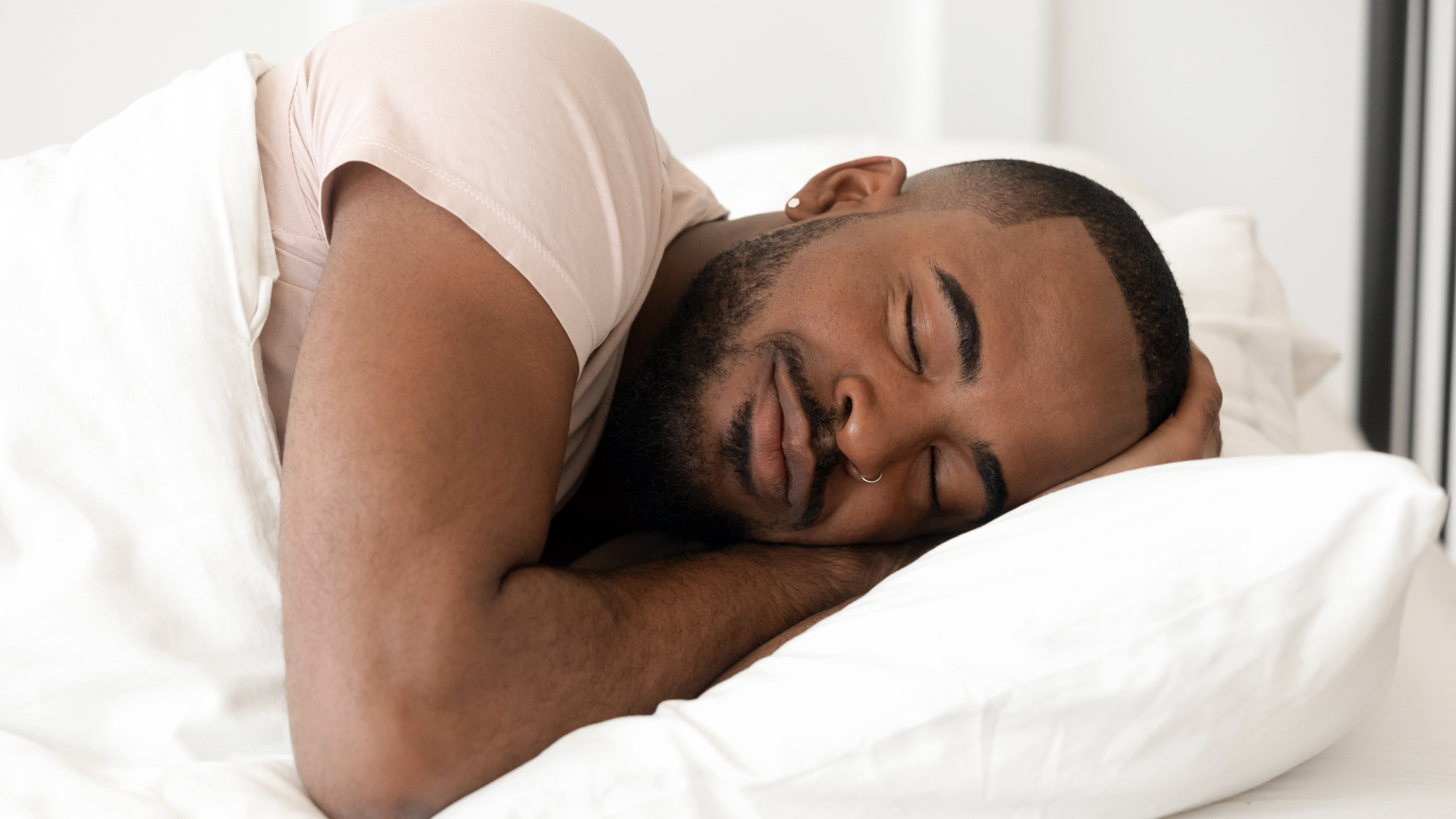Electromagnetic Radiation, Chronobiology, and Sleep
written by: Nathan Daley, MD
Consider how you would feel if you restricted the oxygen in the air you breathe, deprived yourself of fluids, or limited your access to food. Most likely such deprivations would result in an immediate decline in your quality of life, including lower energy levels, mood states, productivity, and general motivation. Continued deprivation would destroy your health. Well, this is exactly what most people living in developed countries are doing to themselves in regards to sleep. Adequate sleep is as important to health and life as air, water, food, shelter, and relationships. Yet, sleep is often one of the first cornerstones of health to be sacrificed in the name of productivity or entertainment. The consequences are astounding, but overlooked.
Adequate high-quality sleep is critical for the balanced function of mind and body. It generates health and, therefore, has a role in preventing and treating ALL diseases. Inadequate and poor quality sleep has been associated with obesity, diabetes, cancers, depression, cognitive decline and dementia, high blood pressure, heart attacks and strokes, infections, and the list goes on. In regards to immediate quality of life, inadequate sleep contributes to fatigue, stress intolerance, poor productivity and performance, irritability, and general disinterest.
Our modern plague of sleep disorders is not exclusively due to lifestyle but also, in part, the result of electromagnetic pollution in the environment. Non-ionizing radiation is now so common that it has been called electro-smog. Studies have shown that exposure to these low frequency wavelengths can disrupt melatonin production and alter circadian rhythms. These wavelengths have been conclusively shown to be biologically active and are capable of altering cellular activity, including brain cell activity. The use of cell phones has also been implicated in the development of certain brain tumors. Visible wavelengths are, of course, part of the electromagnetic spectrum as well. Our rhythmic exposure to light and dark is critical for a healthy circadian rhythm and physiology. The use of artificial lighting has profoundly altered this natural rhythm for most of us and, so, has profoundly altered our chronobiology.
Finally, the interaction of solar/cosmic and geoelectrical energies gives rise to a rhythmic flux of free electrons on the earth’s surface. These free electrons have recently been shown to contribute to the human circadian rhythm when the human body is in contact with the earth’s surface mediums (soil, plants, water, etc.). Further, these free electrons appear to contribute to the health of all organisms on the earth’s surface by regulating electrical potentials and acting as antioxidants. The health implications of our modern day insulation from the earth’s surface media through shoes, cars, insulated flooring material, and etc., needs to be considered.
Basic Approximations of Natural Ecology
1. Embody nature’s rhythms (cosmic rhythms): Life is rhythm. In fact the whole of reality can be defined by nothing more than rhythms, patterns, and oscillating dynamics. Life as a human on earth consists of superimposed rhythms ranging from milliseconds to 30 years or more. The 24 hour mechanical clock has resulted in the profuse atrophy of our perception of natural rhythms. Feel and observe your rhythms and let yourself fall into sync with surrounding nature.
2. Let your body go, it knows: Try freeing yourself from the clock sometime and follow your body’s rhythmic impulses. We do this food and eat when we are hungry, but we also may simply eat because it is noon and that is when we are allowed to eat. Rest when tired, be active when energetic, work when inspired, create when creative, socialize when sociable, and etc. Notice patterns which emerge.
3. Slow with dusk, sleep with dark, wake with dawn: Sleep shifts smoothly with the seasons. Sleep more winter, less in summer. Let dark and light be your sleep clock, not the alarm clock. Don’t let artificial lights push you out of sync with the whole.
4. Overcome naked wrist anxiety, watch nature’s clock: Learn the daily and seasonal rhythms in your local nature. Let nature tell you the time and predict the weather. Awareness of these dynamics allows greater connection, wholeness, health, and wisdom.
5. Love the sun like the leaves: Soak it up and be illuminated with regularity. Daily sun exposure allows one’s constitutional pigmentation to adapt to sun exposure gradually as the intensity changes with the seasons. Sun feels good and somatic wisdom would suggest that it is necessary for health. Vitamin D, serotonin, melatonin, and other hormones or neurotransmitters are influenced by cutaneous sun exposure. Adaptive pigmentation protects against burning, the only real concern in regards to melanoma.
6. Get grounded! Walk barefoot on the earth whenever possible. Lay in the grass. Hug trees. Swim in natural bodies of water. Such activities make the electrical circuit of the human body continuous with that of the earth, nature, and your surrounding ecosystem. Tremendous health benefits can be achieved. Without this connection, the body exists in an electrical (free electron) deficiency. This connection also helps to entrain biological rhythms. A modern compensation is to use grounding or earthing sheets and other products when unable to be in touch with natural mediums.
7. Use ambient light rather than artificial light: We block out the light with walls and ceilings, and then try to recreate the light with light bulbs so we can see. There are so many errors in this approach that it is a truly unbelievable phenomenon. Use the sun for illumination through windows, skylights, open walls, etc. Build interiors in continuity with the exterior.
8. Minimize interference (electrosmog, wireless, cell phones, electronics, ionizing radiation, etc.): Natural rhythms create the symphony of sustainable and healthy life. The notes of this symphony arise from the instrument of electromagnetic energy or radiation. This includes both ionizing and non-ionizing radiation, and visible and invisible wavelengths. To excessively add the tones of low frequency wavelengths, focally and diffusely, is to add noise to this symphony. Emissions (both ionizing and non-ionizing) from technology all have biological effects and great potential for harm.
Sleep:
Achieving Adequate Sleep
What is adequate?
For most people, adequate sleep involves 8-10 hours of uninterrupted sleep each night. It’s true that some people may require only 6 hours of sleep each night, but most people believing this to be true are likely incorrect and simply living an over stimulated life. The best indication of having achieved adequate sleep is feeling fully rested and refreshed upon awakening and having this feeling sustained throughout the day (without caffeine or other stimulants!).
What to do during the day

1. Wake up spontaneously. If at all possible, avoid using alarm clocks and waking before dawn. The body naturally wakes at the end of a sleep cycle when it is most ready to transition into being awake. If you need to wake before dawn, try a “dawn simulator” alarm clock.
2. Exercise! Exercise in the morning and/or afternoon helps optimize circadian rhythms and enhances deep stage sleep.
3. Get natural light. Exposure to sunlight (or bright full spectrum lights) in the morning upon awakening and throughout the day helps to optimize circadian rhythms and enhance daytime energy.
4. Wake up at the same time each day (which means going to bed at the same time each night). This also optimizes the circadian rhythms and helps to prevent delays in going to sleep at night.
5. Minimize caffeine, nicotine, and other stimulants, especially after noon.
6. Address stressful or emotionally involved problems as soon as possible during the day in order to avoid transferring them into disrupted sleep at night.
What to do During the Evening and Night
1. Have a wind-down period before bed. The body and mind should begin coming down with the sun. This means not trying to finish up work demands, exercising intensely, watching action movies, or being under bright lights for 1-2 hours before bedtime. Find something that is limited in time and tends to help you relax and get tired. A warm bath, easy yoga or stretching, breathing exercises or meditation, progressive muscle relaxation, listening to calming music, and light reading are examples of activities which can be incorporated into wind-down routines.
2. Keep the lights dim after dark. Light in the blue part of the spectrum suppress melatonin secretion. Light in the red wavelengths does not. Keeping the lights dim and, ideally, using red lights for reading and getting up to go to the bathroom will help promote high quality sleep. Lowbluelights.com makes incandescent lights without blue wavelengths. Alternatively, red sunglasses (Blue-blockers, etc.) can be used. By the way, light at night (LAN) is considered a probable human carcinogen.
3. Avoid alcohol, nicotine, caffeine, and large meals before bedtime. All of these have been shown to disrupt sleep physiology in detrimental ways.
4. Minimize electromagnetic radiation (“electro-smog”). This type of non-ionizing radiation, in unnatural form, is emitted by wireless technologies and electronics. Studies have shown that exposure to EMR at night reduces melatonin secretion. A simple step is to unplug the wireless modem at night and don’t sleep next to (or wearing) active electronic devices.
5. Keep the bedroom cool and quiet and use the bed only for sleeping and sexual activity. Avoid television in the bedroom.
6. Try “grounding sheets”. These silver threaded sheets plug into a grounded wall outlet and help to entrain circadian rhythms as well as reduce inflammation.
7. Keep a pencil and paper or a journal next to the bed. Record any thoughts which you might attempt to remember overnight. For example, things you just remembered that need to get done, brilliant ideas that come to you, solutions to problems, concerns that are lingering, and etc. You can then leave them on the paper and not in your mind. You can also use the paper or journal to record dreams immediately upon awakening, if interested.
8. Use progressive muscle relaxation or the mindfulness sleep induction technique (see below).
9. Use imagery as you fall asleep. After relaxing, take yourself on a trip to a relaxing paradise or perfect resting spot limited only by your imagination.
10. If you find yourself lying awake in bed, don’t stay there watching the clock and tossing and turning. Get out of bed and do something relaxing such as reading, stretching, breathing exercises, etc. Or, repeat part of your wind-down routine. Then return to bed for sleep. This helps to reset the mind and body for sleep.
Example of Before Bed Routine
8:00pm: House lights dimmed or limited to red lights. Finished with T.V.
and computer. Light reading, conversation, or music. Enjoy a cup of
caffeine-free herbal tea.
9:00pm: Get ready for bed, then enjoy a warm bath with lavender essential
oils, meditation, breathing exercises, or light stretching or yoga, for 30 minutes. Keep lights very low or off.
9:45pm: Lie down in bed and begin progressive muscle relaxation, mindfulness sleep induction technique, and/or imagery.
10:00pm: Sleep.
Supplements and Herbs for Sleep
1. Magnesium: Magnesium helps prevent a number of degenerative and chronic conditions, but it can also help with relaxation and sleep when taken before bedtime. Magnesium promotes the secretion of melatonin during sleep.
2. Melatonin: Melatonin is a key hormone in regulating the sleep-wake cycle, driving deep stage sleep, modulating the immune system, and preventing certain cancers. Taking melatonin at the right time can help correct abnormal circadian rhythms and promote deep sleep. Some medical conditions result in impaired secretion of melatonin, and melatonin supplements then become important for maintaining health and treating the condition.
3. Zinc: Helps promote melatonin secretion during sleep. Taking melatonin, magnesium, and zinc together, 1 hour before bedtime, was shown to significantly improve sleep time and quality, daytime alertness and activity, mood, and quality of life.
4. Glycine: Taking 3 grams of glycine before bed acts on the hypothalamus to lower body temperature, help initiate sleep, and promote deep stage sleep.
5. Herbs and Others: there are numerous herbs which can be used to improve sleep. These include Chamomile, Passion Flower, Hops, Reishi mushroom, Valerian, Lemon Balm, L-Theanine, GABA, and 5-HT. Oftentimes they are used in combination. If you are interesting in trying herbs for sleep, please contact an herbal practitioner for an individualized recommendation.
6. Lavender and/or Jasmine aromatherapy: Applying lavender or jasmine essential oil to the pillow case or bed sheets, or using it in a bath, can help prepare the mind for sleep. One study showed that jasmine aromatherapy was as effective as Valium in calming subjects before bed.
Mindfulness Sleep Induction Technique
adapted from the University of Wisconsin Integrative Medicine handout by David Rakel
1. Lie in bed and prepare to fall asleep.
2. Begin with abdominal breathing: To check that you are doing abdominal breathing, place one hand on your chest and one on your abdomen. Breathe in so that the hand on the abdomen rises higher than the hand on the chest.
3. Take a slow deep breath in through your nose for a count of 3-4 and exhale slowly through your mouth for a count of 6-7.
4. Allow your thoughts to focus on your breath and the air gently entering and leaving your nose and mouth.
5. Repeat this cycle for 8 breaths.
6. After 8 breaths, change your body position in bed and repeat for another 8 breaths. Continue this cycle of position changes and 8 breaths. It is rare to complete 4 cycles before falling asleep.
Progressive Muscle Relaxation Technique:
1. Lie in bed and prepare to fall asleep. Have someone else read these steps if possible.
2. Assume a passive attitude and focus on your body.
3. Tense and relax each muscle group as follows:
a. Forehead: wrinkle your forehead; try to make your eyebrows touch your hairline for five seconds. Relax.
b. Eyes and nose: close your eyes as tightly as you can for five seconds. Relax.
c. Lips, cheeks, and jaw: Draw the centers of your mouth back and grimace for five seconds. Relax. Feel the warmth and calmness in your face.
d. Hands: extend your arms in front of you. Clench your fists tightly for five seconds. Relax. Feel the warmth and calmness in your hands.
e. Forearms: extend your arms out against an invisible wall and push forward with your hands for five seconds. Relax.
f. Upper arms: bend your elbows and tense your biceps for five seconds. Relax. Feel the tension leave your arms.
g. Shoulders: shrug your shoulders up to your ears for five seconds. Relax.
h. Back: arch your back off the bed for five seconds. Relax. Feel the tension disappearing.
i. Stomach: tighten your stomach muscles for five seconds. Relax.
j. Hips and Buttocks: tighten your hip and buttock muscles for five seconds. Relax.
k. Thighs: tighten your thigh muscles by pressing your legs together as tightly as you can for five seconds. Relax.
l. Feet: bend your ankles toward your body as far as you can for five seconds. Relax.
m. Toes: curl your toes as tightly as you can for five seconds. Relax.
4. Assess for remaining tense muscles. Tighten and relax those muscles four times.
5. Experience the deep relaxation of your body and the peace of your mind.
See how we can help you restore complete health of body, mind & spirit.
Join our mailing list and receive exclusive offers + information!







Trackbacks & Pingbacks
[…] quality of sleep in our hyper-networked, productivity-driven society has been associated with a wide gamut of diseases including but not limited to – infertility, cancer, chronic fatigue, cardiovascular issues, […]
Leave a Reply
Want to join the discussion?Feel free to contribute!